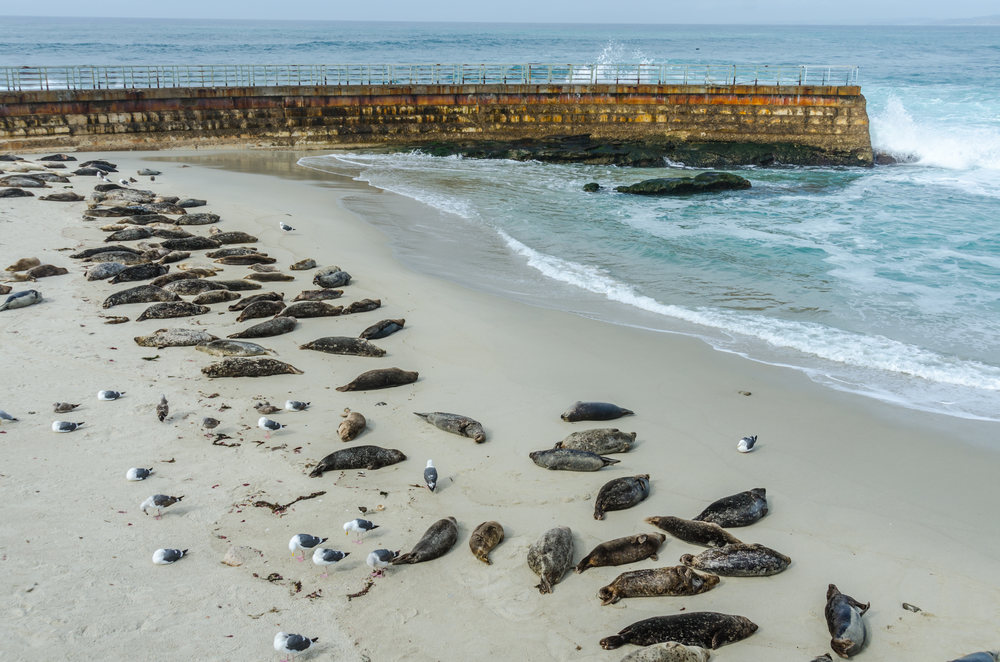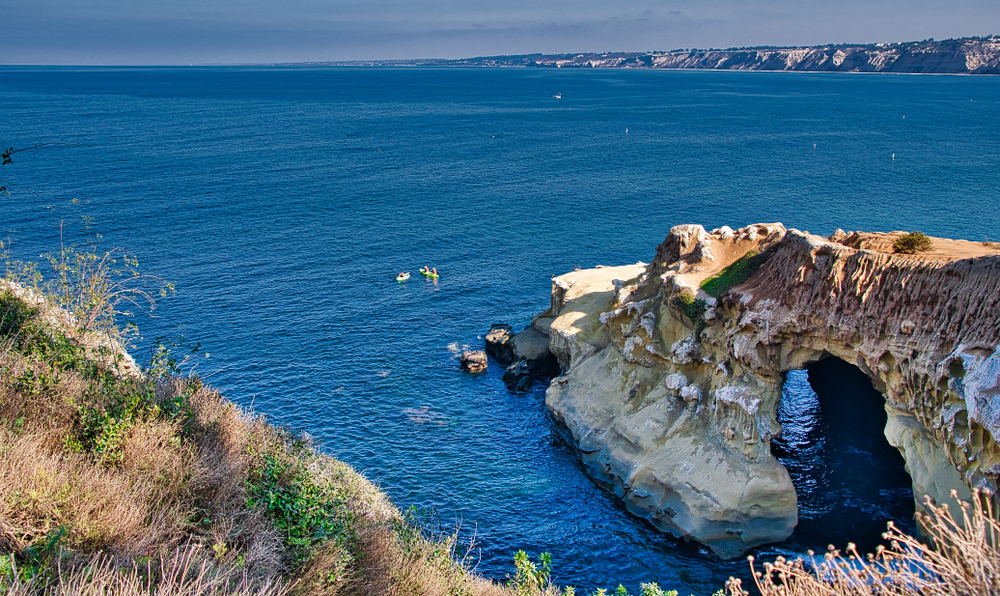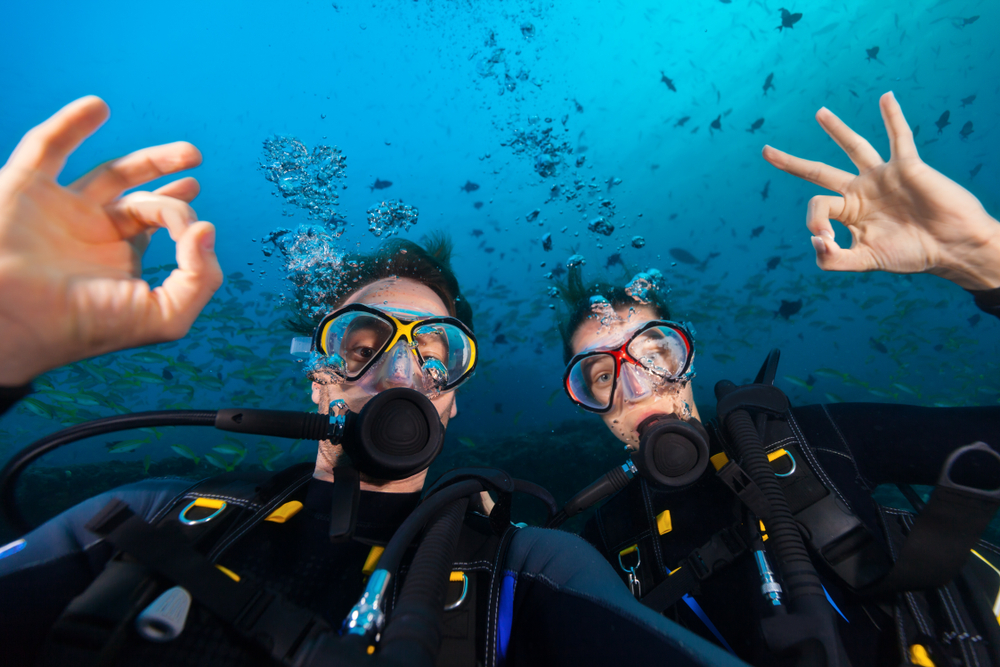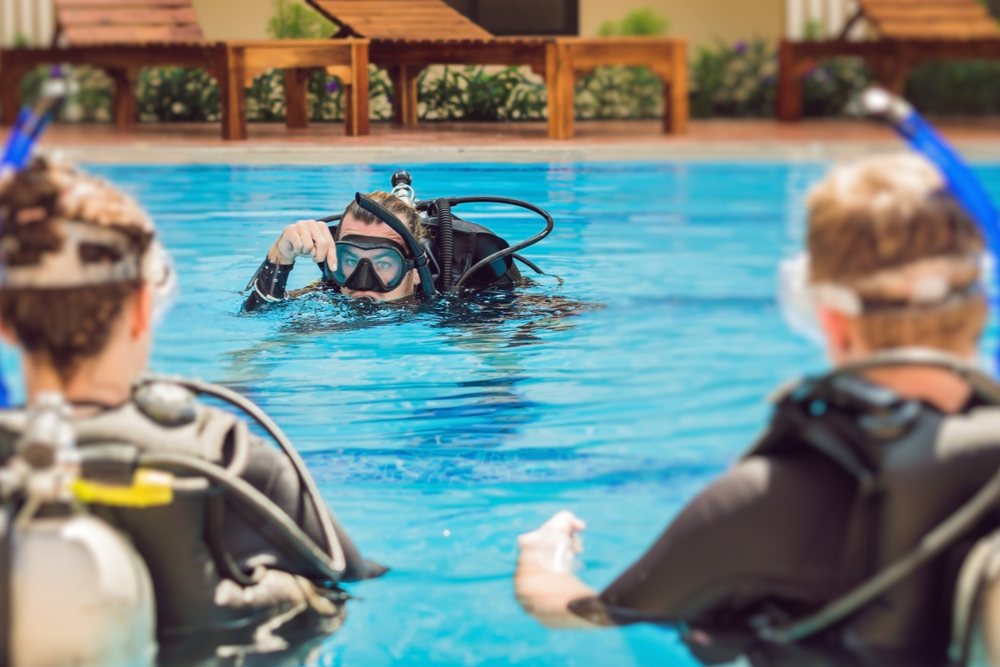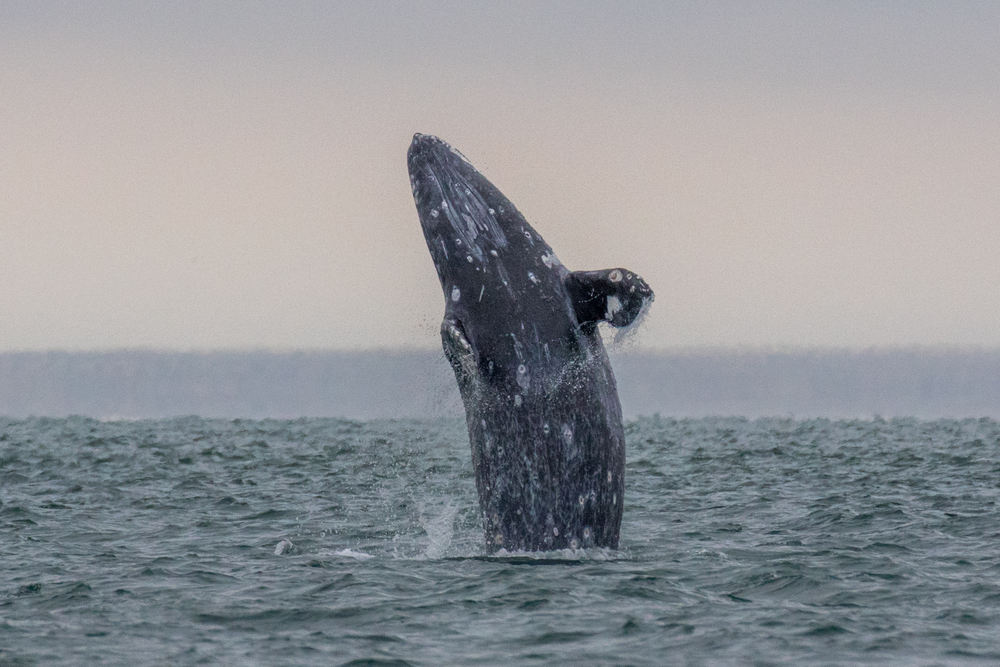On a snorkel tour or scuba dive with Trident Divers, you might bump into some of the aquatic creatures that call the La Jolla Ecological Reserve home. A wide variety of animals live above and below the surface within the reserve, and you might be lucky enough to catch a glimpse of some while you are out with us. These are 7 animals you’ll see around the La Jolla Ecological Reserve.
1. Garibaldi Fish
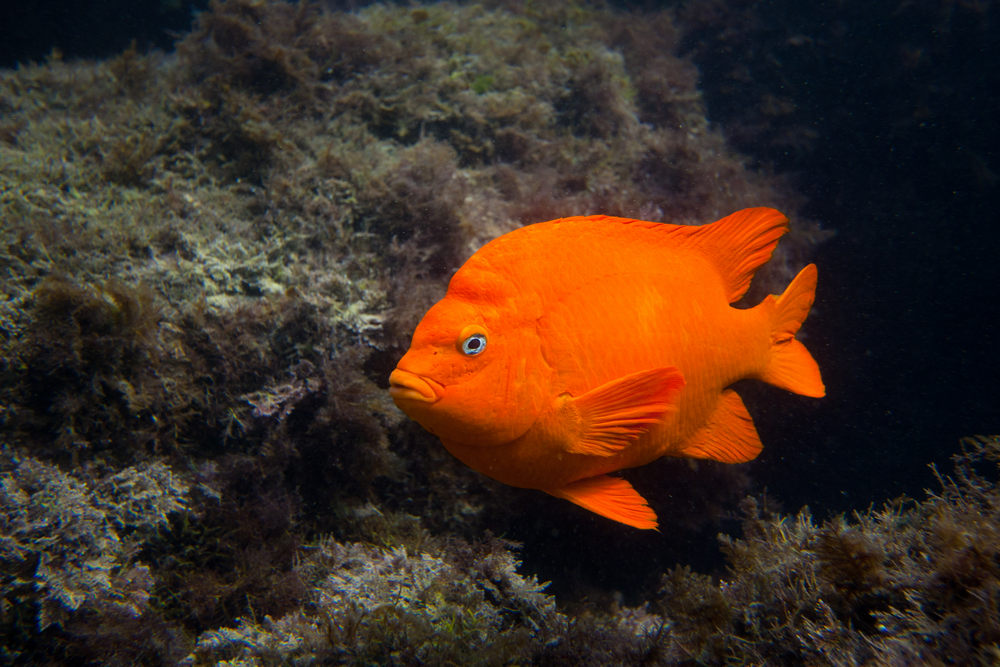
The infamous orange garibaldi fish is California’s official state saltwater fish and allegedly the inspiration for many of the fish in books by Dr. Seuss, who lived in La Jolla for part of his life. In 1993, California passed legislation to protect the fish from overharvesting because of their popularity. Many aquarium owners wanted to have the bold, bright, and orange garibaldis in their tanks. The largest Damselfish in the world, the brightly adorned fish is bold – and likely gives support for the rumor of why its common name is Garibaldi. Its scientific name is Hypsypops rubicundus, but legend has it, this fish was named for Guiseppe Garibaldi – ask us about this story when you are on a tour with us.
2. Leopard Sharks
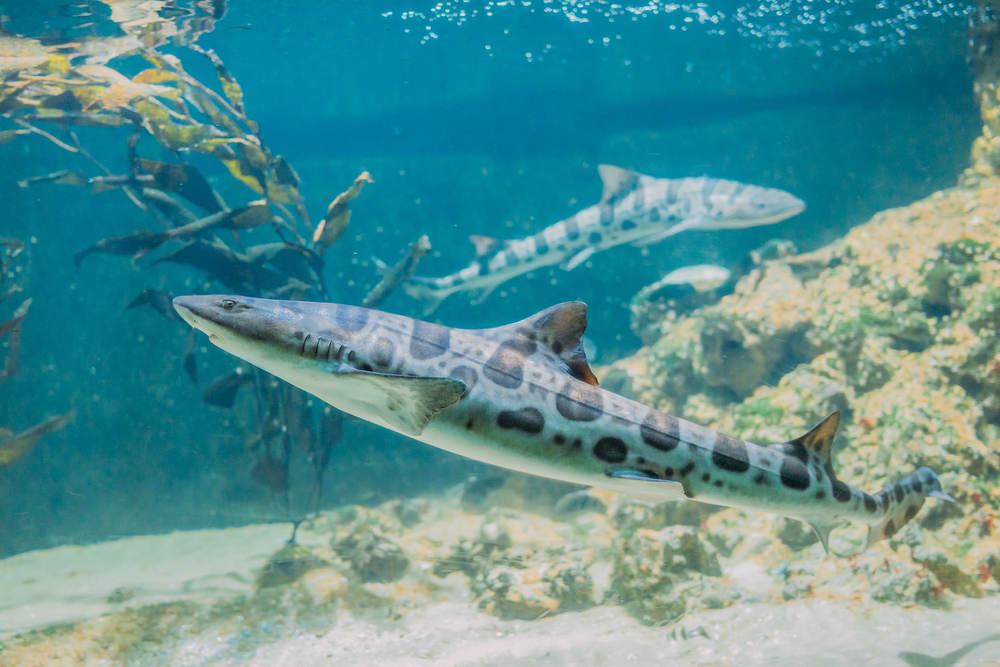
Distinctive from the moment you see one, the leopard shark is unique in its distinctive markings – not quite spots, but a pattern resembling the namesake leopard. Don’t worry though; these guys pose little threat to humans – well at least those not attempting to handle one. They prefer to feed on crustaceans, crabs, and small fish. These sharks grow to lengths between 4 and 6 feet and prefer the warm shallow waters in the vicinity of the La Jolla Sea Caves. Your best chance to observe these amazing animals is from June to late September with one of our expert guides.
3. Brandt’s Cormorant
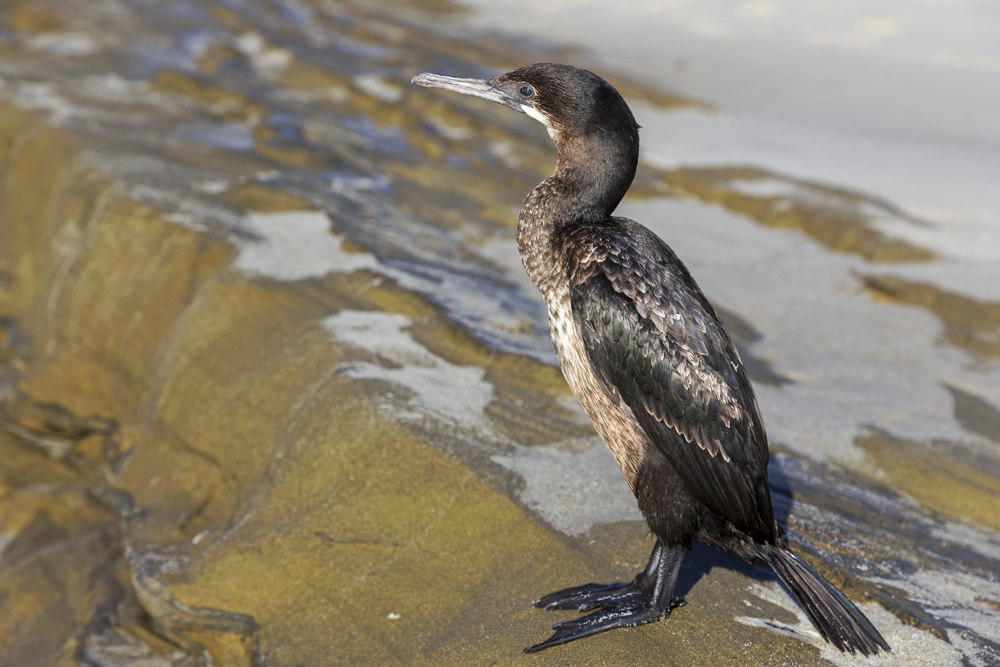
You can find these beautiful black waterbirds enjoying kelp beds and bays along the La Jolla coast. These birds love to hang out during our tours, and you might even catch one dive into the ocean and swim underwater for their next meal, gracefully diving into the water to hunt for squid and fish. Some of our clients have been fortunate to observe these birds hunt in a fashion similar to wolves – one even having the honor to witness a cormorant fetch an octopus from a hole in 75 feet of water. An amazing hunter to observe, and an even more amazing parent to watch as they tend to their nesting eggs.
4. Gray Whales
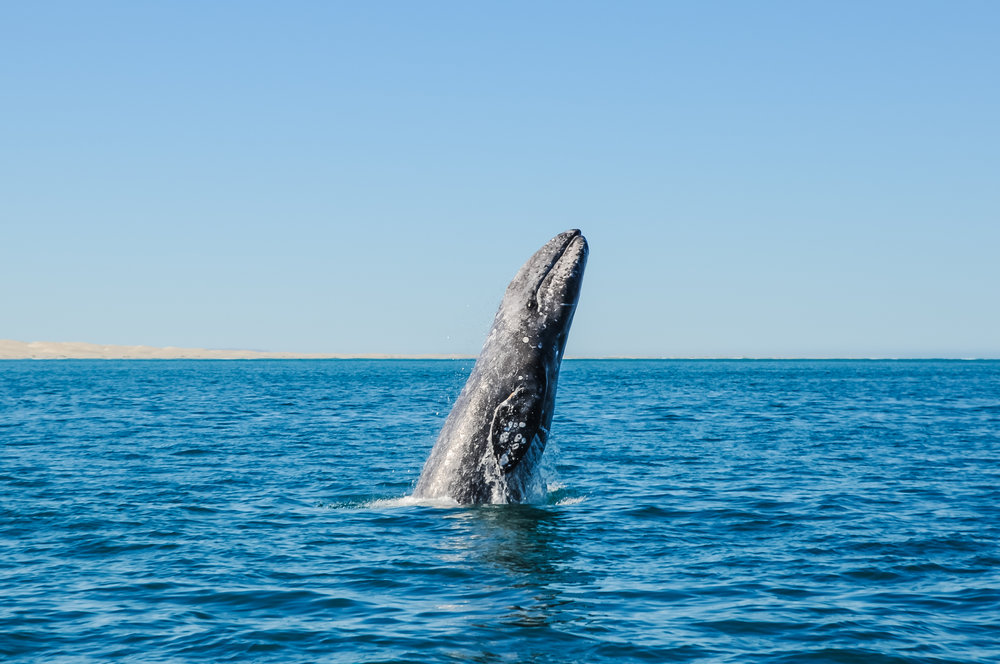
One estimate claims there are only 26,000 gray whales in the Pacific Ocean – so seeing one is always special. Gray whales spend their summers north of Alaska, and you can catch them passing through San Diego from December to mid-February as they migrate south to Baja California to mate and give birth. They are the only mammal that migrates that far every year! If you book a snorkeling tour or dive in the San Diego winter, you might catch a glimpse of these extraordinary creatures on their journey. We have been fortunate enough to share the water with these gentle giants on more than one occasion – when you are out, ask us about JJ…it’s an insider’s story.
5. Seals & Sea Lions
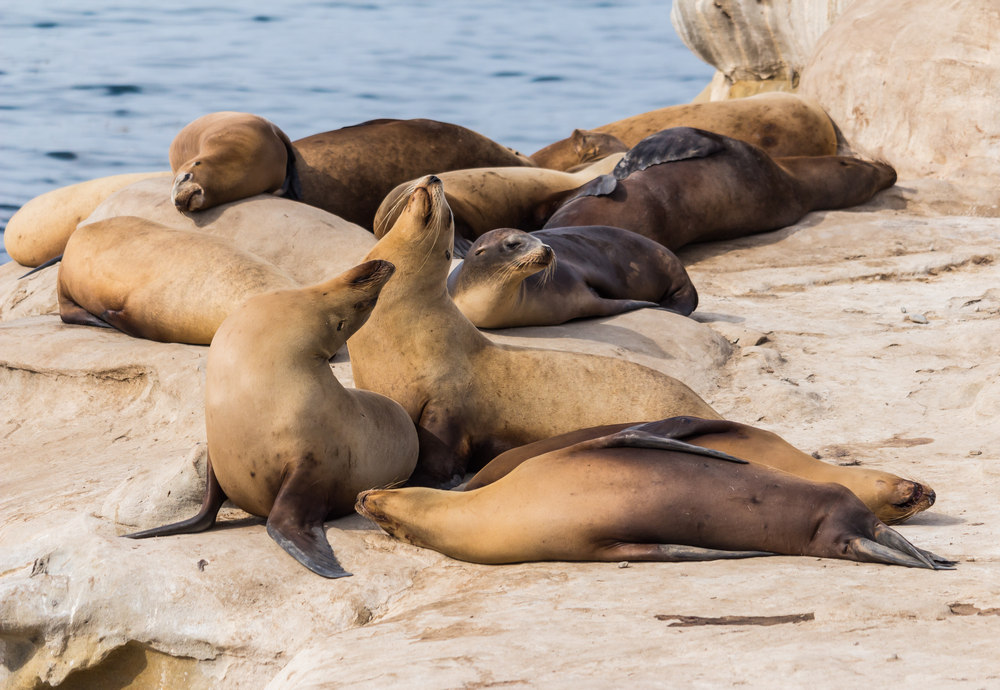
Seals and sea lions are common to the shores of San Diego, and La Jolla is known as the place where you might observe both on the same dive. Some find it difficult to tell the two apart, but our expert guides can help you learn the differences between the two.
- Noise: Sea lions vocalize regularly, often referred to as barking. Seals however, if they do vocalize, are commonly referred to as a grunt.
- Ears: Sea lions have external ear flaps easily identified both above and below the water. On the other hand, seals have tiny holes for ears (external auditory meatus), which can be difficult to see – unless they let you get close enough, which they probably won’t!
- Feet: Sea lions have the ability to rotate their hind limbs – which allows them to “walk” over land, and large front flippers. Seals lack the ability to rotate their hind limbs and therefore cannot “walk” on land, but instead undulate across land.
Of course, there are several other morphological and anatomical differences between seals and sea lions, but you’ll need to ask your guide – they do enjoy sharing the knowledge they’ve spent decades refining.
6. Dolphins

We have many species of dolphins that frequent the La Jolla Ecological Preserve. The largest and rarest of them being Orcinus orca, but the one you were likely thinking of, Tursiops truncates (Bottlenose Dolphin), is frequently observable, especially when bait-balls are present with in the preserve. Dolphins fall into a group known as the “toothed whales” or Odontocetes – because of the teeth that each member possesses. They have some amazing anatomical adaptations which allow them to “ping” their environment through echolocation, and a hunting strategy which makes them a formidable predator. We can’t guarantee a sighting, but our expert guides can give you the best chance to be where they will be, for the biological reason they are here.
7. Pelicans

Pelicans are large birds with long beaks and huge throat pouches for scooping fresh meals straight out of the ocean. Pelicans will scoop up and eat anything from fish, birds, and turtles to the sandwich right out of your hand! But please, don’t offer them anything…we want the wild things to stay wild 😊 We have a perfect location for observing these amazing birds during our dive tours…let us help you find them, and observe them being wild.
Book Your Diving Adventure Today!
At Trident Divers, we bridge the gap between exploration and education to provide you with an incredible dive experience. You’ll see amazing sea life when you book a tour or dive with us in La Jolla Cove. If you are here for an extended stay…book yourself the best dive training program you will find anywhere. You will be trained to dive competently in the waters Southern California is known for. Call us at (619) 415-9426 or contact us through our website. We look forward you having you join us.


